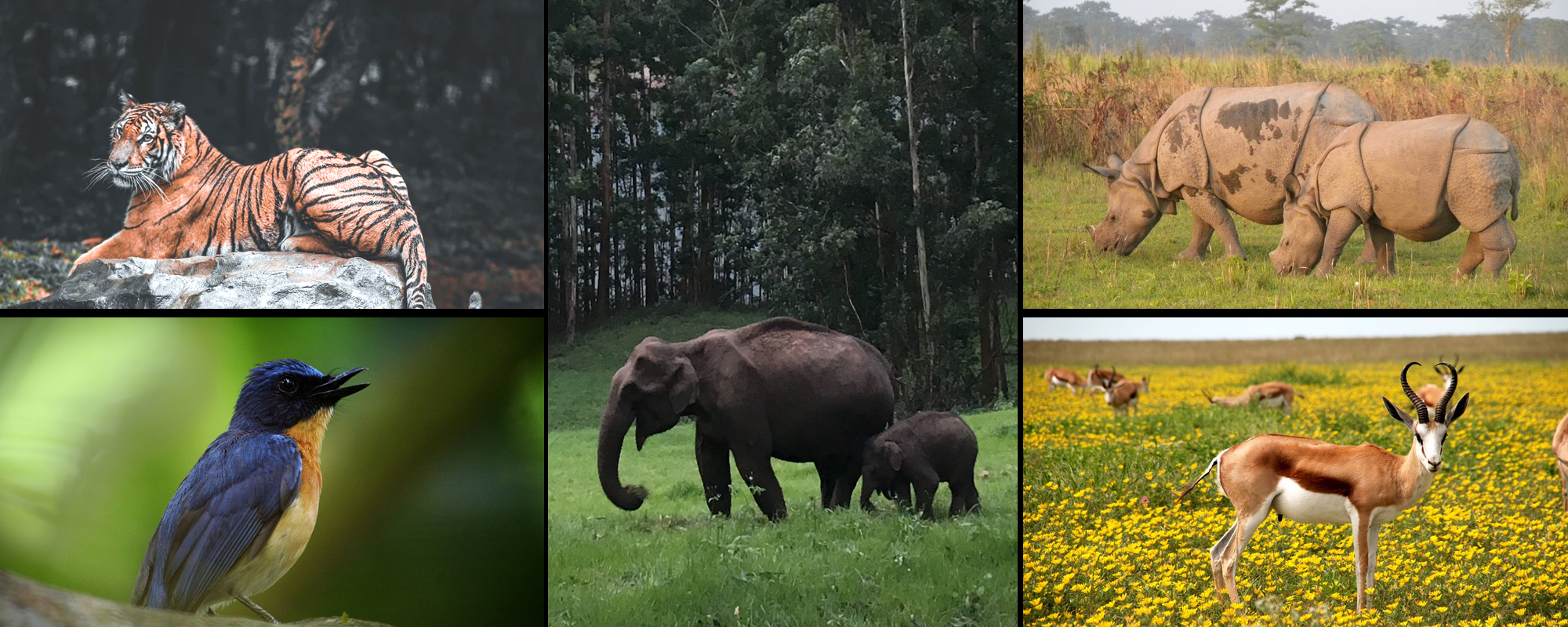
Immerse yourself into the bounties of nature amidst a diverse species of flora and fauna by taking a journey into the wild at the Rollapadu Wildlife Sanctuary located in the Kurnool district of Andhra Pradesh. Spread in a vast area of 614 square kilometers, Rollapadu Wildlife Sanctuary offers its visitors a vibrant ecosystem with a multitude of exotic wildlife species including mammals, avifauna, and reptiles, along with some magnificent floral species that cover the entire sanctuary.
Declared as a Wildlife Sanctuary in the year 1988, Rollapadu Wildlife Sanctuary is abode to the threatened species of The Great Indian Bustard which is a majestic bird with an average height of up to 120cm, long legs, and brownish plumage along with another bird called Lesser Florican. Apart from these, the sanctuary is also a habitat for many other mammals, reptiles, and birds which includes migratory birds as well. From Blackbucks to Sparrows to Bonnets and from Mynas to Indian rollers, Russell’s Viper and Indian Cobras, the wildlife sanctuary is a dream place for a wildlife paramour or a photography enthusiast. If you are a nature lover with a passion for being close to and gaining insight into biodiversity, a day spent in Rollapadu will fulfill your quench and will be worth your time.
Being the Rollapadu village in the vicinity, visitors can even talk to the villagers and know about their lifestyle. The sanctuary has a man-made reservoir for the wildlife to thrive and another wildlife for rainwater harvesting which also sets a fine example of the reciprocated coexistence of humankind and nature. The topography of this sanctuary is gently undulating plains with an elevation of 290m and vegetation is of Southern Tropical Thorn Forest type. There is a small bird museum, a watch tower, and a guest house near the sanctuary for visitors to rest and spot various birds at their leisure.
The landscape mainly comprises open grasslands, mixed forests, and thorny bushes. Other species of trees include Ficus Tiela, Sepiata, Manilkara, Strychnos, Uberifolium, and Hexandra.
Birds: The Great Indian Bustard, Lesser Florican, Sparrows, Indian Roller, Eagles, Mynas, Barheaded Geese, Demoiselle Cranes, Greater Flamingos.
Mammals and Reptiles: Indian Fox, Blackbuck, Bonnet Macaque, Russell’s Viper, Indian Viper, Indian Cobra, Jackal, Wolf, Jungle Cats, Sloth Bears, etc.
The climate of the sanctuary is usually hot and dry most of the year with an average temperature of 40 degrees Celsius in summers while the winter temperature is 28 degrees Celsius on an average. The area experiences an average rainfall of 450mm with humidity in the monsoons.
The best time to visit the wildlife sanctuary is during the winters from October to March when the weather is pleasant and not very scorching hot to explore the area. During this time, you can see a lot of migratory birds flocking in the sanctuary.
Nearest Train Station: The nearest railway station is in Kurnool at about 45km away and is well-connected to other stations in the major cities of the country. Taxis and buses are available from the station to take you to the wildlife sanctuary.
Nearest Airport: The nearest airport is in Hyderabad at about 60km from the town. State run buses and taxis are available from the airport to Kurnool from where you can reach the wildlife sanctuary.
Road Accessibility : The wildlife sanctuary is well-connected to a road network and APSRTC runs buses from major cities connecting Rollapadu wildlife sanctuary.
Copyright 2012-2022 Indiamap Digital Pvt Ltd. All rights reserved. Privacy Policy | Terms of Use